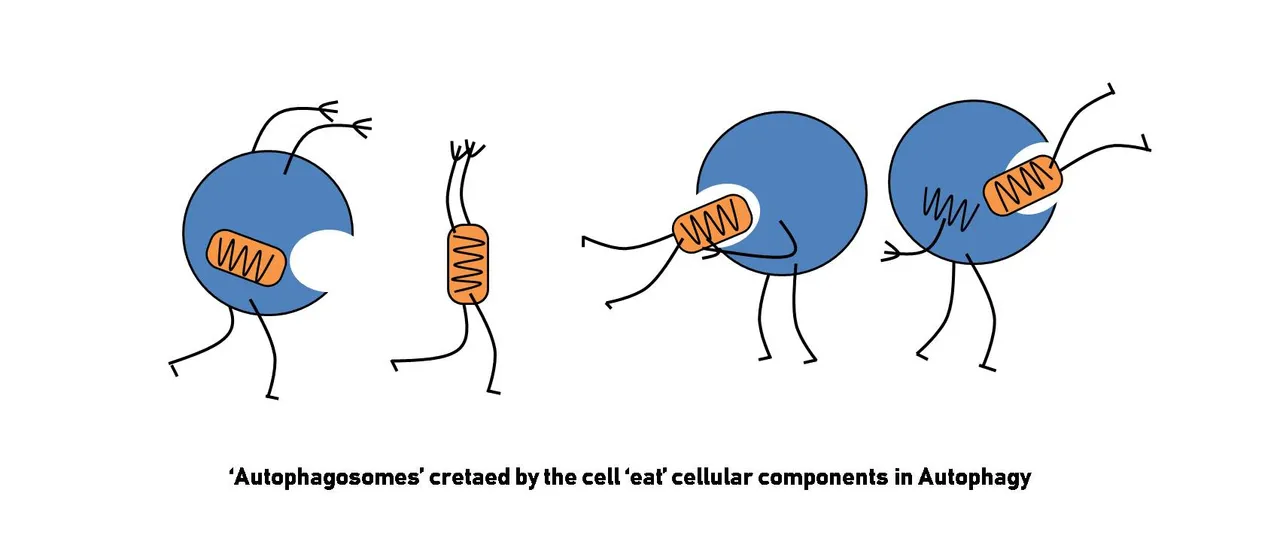There is a widespread belief that fasting improves our health and cleanse the body. A large number of people exercise fasting for several days, as a religious practice, are now trying to come up with a scientific explanation for the same. When the Nobel Prize in Physiology or Medicine was given to Yoshinori Ohsumi for his "discoveries of mechanisms for autophagy", such people were hepped up and have written articles saying that the Japanese scientist substantiates their argument about fasting. Is it true? Let us find out.
What is autophagy
“Besides direct pollution, lack of adequate waste disposal mechanisms also creates hazardous effects to the planet, which is becoming a roadblock to the environmental protection programmes across the globe. We are yet to implement reuse and recycle of used things in a wide-spread manner.” Wait! I was supposed to tell about something called “autophagy”, but why am I talking about environmental pollution and its mitigation? Autophagy is nothing but a recycling process. The mechanism behind this process involving cleaning, recycling and reusing the polluted, unwanted or obsolete stuffs by cells in our body, is astonishing.

The word ‘autophagy’ literally translates to ‘self-eating’. Cells of eukaryotic organisms eat the damaged or redundant components in it to restore the equilibrium condition( this is called homeostasis). Eukaryotes are living beings having cells within which the genetic material is DNA, which are heavily packed as chromosomes, contained within a distinct nucleus. From the ultra-smaller yeast to large and complex animals such as human beings, all the eukaryotes take the help of autophagy in their cells to maintain homeostasis.
Self-eating is initialized by the formation of fluid containing structures enclosed by lipid layers, called vesicles inside the cell. These vesicles which engulf damaged proteins and deformed organelles (cellular components) are termed as autophagosomes. Once the autophagosomes are loaded with the ‘waste materials’ they fuse with the lysosomes, where the contents are degraded into smaller constituents. The degradation of macrostructures results in smaller molecules which are building blocks and nutrients, which can be utilized for various cellular metabolic processes. This is just like reusing the strong parts of dismantled old buildings in new construction works.
What are the tools used in autophagy?
In order to understand this, one should know about the tools of a cell which are most of the times proteins. Proteins in the form of enzymes, carriers, structural units etc., carry out the majority of functions in cells. DNA, in the form of genes, stores the information about all the proteins needed to be synthesised in every eukaryotic cell. Multiple genes are required to code for the proteins involved in the entire autophagy mechanism. Yoshinori Ohsumi, using yeast as the model system, identified 15 such essential genes for autophagy.
Under starvation (deprivation of nutrition), cells recycle less important parts using autophagy for availing nutrients. Autophagy is also employed to free the space to incorporate newly formed organelles or bigger molecules. Recent studies show this process can clear the toxic substances and unwanted foreign bodies that entered the cell.
As in the case of inadequate waste disposal in a city, the absence of autophagy will cause an accumulation of useless materials in cells. This may trigger many disease conditions similar to epidemic outbreaks due to the lack of proper waste management. Diseases like diabetes and Parkinson’s disease can be after-effects of the halt of autophagy. Improper autophagy is a pathological condition in breast and ovarian cancer according to some studies.
Besides the maintenance of homeostasis, autophagy plays a crucial role in embryogenesis and cellular differentiation. Even though this beautiful phenomenon in cells was identified way back in the nineteen sixties, we had to wait till 1993, when Ohsumi published his groundbreaking works, to know the secret of its mechanism.
Targeting autophagy in diseases such as cancer is becoming hot research topics currently. Early foundation laid by Yoshinori Ohsumi and his achievements will motivate a large number of new researchers in this field of scientific research. This will ultimately help us to understand the mechanisms involved in a number of deadly diseases.
Does autophagy improve health?
Autophagy is a survival mechanism employed by the cell under food deficient conditions. Though it has a potential of cleaning unwanted foreign objects and pathogens, for an effective immune response we require proper nutrients primarily. For any person with weak immunity fasting is a bad idea to 'clean the body'. For a healthy life, nutritious food and regular body exertion are the best practices.
References
- Nobel Prize in Physiology or Medicine, 2016, Press release
- Mizushima, Noboru. "Autophagy: process and function." Genes & development 21.22 (2007): 2861-2873.
- Autophagy : Wikipedia
- Masini, M., et al. "Autophagy in human type 2 diabetes pancreatic beta cells." Diabetologia 52.6 (2009): 1083-1086.
- Lynch-Day, Melinda A., et al. "The role of autophagy in Parkinson’s disease." Cold Spring Harbor perspectives in medicine 2.4 (2012): a009357.
- Karantza, Vassiliki, and Eileen White. "Role of autophagy in breast cancer." Autophagy 3.6 (2007): 610-613.
- Shen, Yang, et al. "Decreased expression of autophagy-related proteins in malignant epithelial ovarian cancer." Autophagy 4.8 (2008): 1067-1068.
-Gross, ROBERT L., and PAUL M. Newberne. "Role of nutrition in immunologic function." Physiological reviews 60.1 (1980): 188-302.
PS: This is a minor modified version of an article I published in DIGIT-SCIENCE, my blog. Currently, that article is removed from that site to avoid auto detection of plagiarism.